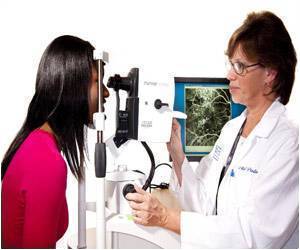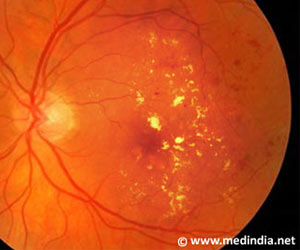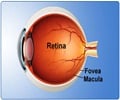
‘Combinations of Food and Drug Administration-approved drugs protect against the loss of cells required for vision in a mouse model of blinding retinal diseases.’
Tweet it Now
The drugs, which are currently used for a range of conditions, from lowering blood pressure to treating prostate disease, may eventually offer an option for preventing vision loss associated with the degeneration of cells in the retina. If the therapy's success is replicated in humans, it would represent an entirely novel approach to preventing visual impairment, said the study's principal investigator, Krzysztof Palczewski, chair of the Department of Pharmacology at Case Western Reserve University. The researchers selected the drugs because they act on G protein coupled receptors (GPCRs), a family of signaling proteins in various cell types throughout the body. When working properly, such signaling keeps the cell in homeostasis, a state of balance with multiple biological processes buzzing along in sync.
The researchers studied wildtype and transgenic mice that were bred to have retinas especially susceptible to light-induced degeneration of their photoreceptors, the key cells in the retina that detect light and convert it into a signal for vision. Both types of mice were exposed to a bright light long enough to lead to significant losses of photoreceptors as well as other types of cells in the retina and a thinning of a retinal layer.
In previous studies, Palczewski and his team had found that when mice develop light-induced retinopathy, it could hinder the activity of GPCRs. So they asked, "What if we expose the mice to compounds that activate GPCRs?" They identified more than a dozen drugs with a particular affinity for GPCRs in the retina and that also appeared to be significantly protective against light-induced photoreceptor degeneration.
In the current study, the researchers zeroed in on two combinations of these drugs that each individually take different pathways to the same target: optimizing the activity of GPCRs. Wildtype and transgenic mice that were dosed with the drug combinations prior to light exposure were more likely to preserve their retinal layer and photoreceptor cells compared to those that were not given the prophylactic therapy prior to light exposure.
Advertisement
The combinations of drugs used in the study work synergistically to achieve what's called systems pharmacology, a relatively new concept, Palczewski explained. Traditionally, patients are often treated by means of poly-pharmacology, multiple drugs that act on different targets, which means that each drug needs to be dosed at high enough levels to achieve a response at their respective targets. While effective, such doses of several drugs over time can lead to side effects.
Advertisement
"It's reassuring that the drugs used in the study are already being used in clinical practice, so we know their safety profile," Palczewski said. Future studies will need to be conducted to ensure that there is no additional risk of toxicity when the low doses of the agents are used together.
"Discovering new uses for drugs that are approved by the FDA provides the quickest possible transition from bench to bedside," said Neeraj Agarwal, who manages the NEI's translational research program. "These studies are remarkable as they offer a systems pharmacologic approach for treating retinopathies."
Source-Newswise










